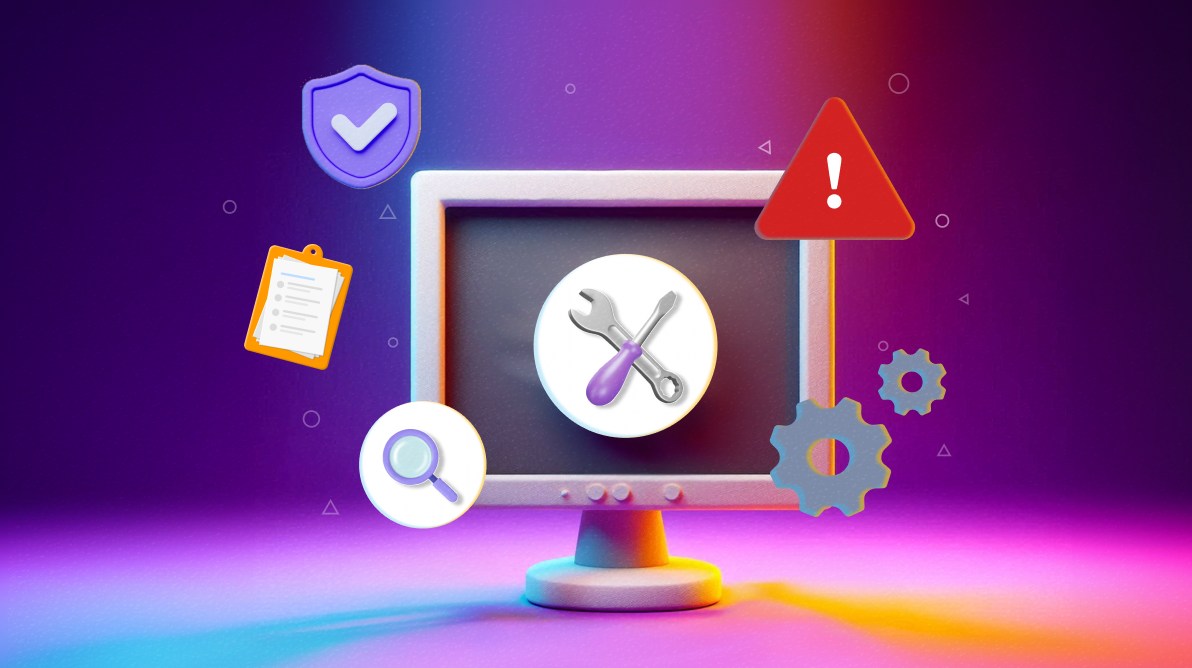No product is flawless. Products fail from time to time, and when they do, customers need a solution. This is when troubleshooting guides are critical.
Depending on a guide’s availability and the troubleshooters’ skills and experience, customers are often able to solve their problems themselves.
According to a study conducted by Higher Logic, 77% of customers have a more positive perception of businesses that provide self-service choices for client support.
When provided with such options, your end users are likely to resolve their issues independently, reducing the workload on your support staff.
With this data point in mind, it is clear that businesses benefit greatly from developing troubleshooting guides for their customers.
This blog will explore common approaches to troubleshooting and provide simple steps to writing troubleshooting guides.
What is the troubleshooting definition?
Troubleshooting is a step-by-step approach to discovering the root cause of a problem, resolving it, and restoring the product to operation.
Troubleshooting guides are written step-by-step instructions for resolving issues with a specific product or process.
They list common issues and recommend solutions, empowering users to resolve problems independently.
For instance, if your product is help desk software and your customers encounter technical issues, providing clear troubleshooting guides would make a big difference to your customers.
They could resolve their issues quickly and avoid similar problems from reoccurring.
Types of approaches for troubleshooting problems
Various approaches can be utilized to identify and resolve issues effectively. Here are some of the most common ones:
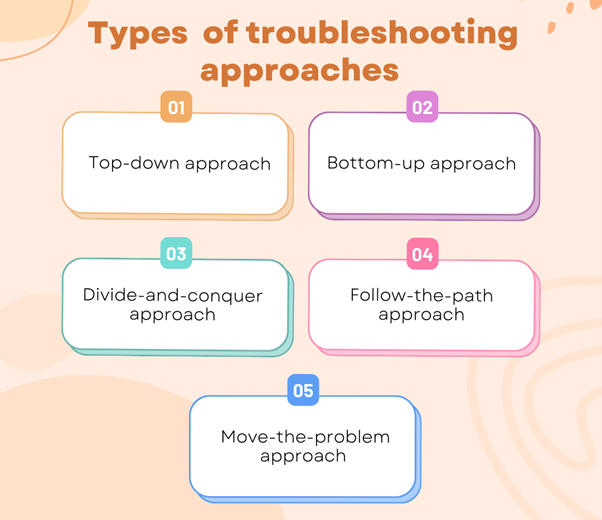
Top-down approach
This method starts investigating the issue at the highest level of the product and works down to the lowest level. It is often used in network troubleshooting and software debugging.
Bottom-up approach
This approach begins at the lowest level of the product and works upwards. It’s useful when you suspect the problem is at the base level, such as hardware issues or lower-level software functions.
Divide-and-conquer approach
This method involves breaking down the system into smaller parts and testing each separately to isolate the problem.
Follow-the-path approach
This method involves observing and comprehending the interactions of various components and then utilizing that path to pinpoint the source of the problem.
Move-the-problem approach
This method relocates the problematic product to another environment to isolate and observe it. If the issue persists after the relocation, the problem is in the product, not the environment.
If the product functions normally in the new environment, the issue is likely in the original environment.
It’s important to note that this approach should only be considered if all other troubleshooting methods have been unsuccessful.
How to write troubleshooting guides in six steps
Creating troubleshooting guide templates is a great way to ensure consistent and comprehensive problem-solving documentation.
Here’s a step-by-step approach to writing an effective guide:
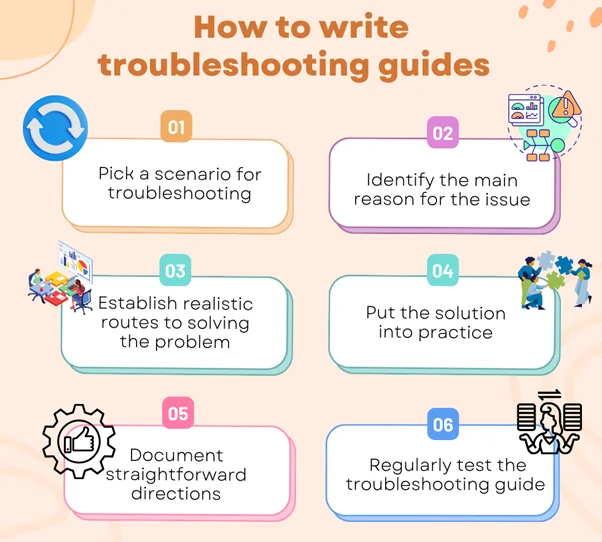
Pick a scenario for troubleshooting
Make a list of issues customers may encounter when utilizing your product or service and organize it into categories. Here are some tips for creating a comprehensive list of troubleshooting scenarios:
- Identify common issues: List common problems users face with your product. This can be compiled from customer feedback, support tickets, or personal experience with the product.
- Detail the scenarios: Clearly describe the scenarios where the issue might occur. Include relevant background information such as the product version, environment (e.g., operating system, network configuration), and specific actions leading up to the problem. Don’t just list problems; create a narrative.
After making this list, pick an issue to be the subject of your troubleshooting guide.
Identify the main reason for the issue
This is where you clearly define what the cause of your selected problem is. Be specific! Diagnose the underlying cause of the problem by following these guidelines:
- Gather data: Collect information about the issue from various sources, including error messages, logs, and user reports.
- Analyze signs: Look for patterns that point to the root cause. For example, does the issue occur only with certain files or under specific conditions?
- Think like a user: Put yourself in the user’s shoes. What steps might lead to the problem? Consider various factors, such as configuration settings, user errors, or software bugs.
- Break down the problem: List and categorize potential causes based on likelihood. This helps narrow down the issue and find the most relevant solution.
Example: The product is not responding due to a network connectivity issue.
Establish realistic routes to solving the problem
Develop practical and achievable solutions to the issue by following these guidelines:
- List possible solutions: Brainstorm multiple solutions that address the identified root cause. Start with the simplest and most common fixes. Customers appreciate quick solutions, so provide easy fixes first. Consider both immediate fixes and long-term solutions.
- Evaluate probability: Assess the likelihood of each solution, considering user skill level, resource availability, and time required.
- Prioritize solutions: Rank solutions based on effectiveness, ease of implementation, and impact.
- Offer multiple paths: Not all problems have one solution. Provide alternative troubleshooting steps for different scenarios.
Example:
If the product is not responding, try the following:
- Restart the system
- Check the Wi-Fi connection
- Update the system
Put the solution into practice
After understanding the issue and determining solutions, implement them yourself. Follow this procedure:
- Step-by-step implementation: Break down the solution into clear steps.
- Test the solution: Apply the solution to the problem scenario to ensure it resolves the issue.
- Make adjustments: If the solution doesn’t fully resolve the issue, adjust and start at step 1 again.
Document straightforward directions
Create user-friendly documentation of the troubleshooting process and publish it in your knowledge base. Ensure each step is detailed sufficiently and numbered for users to follow.
The following are suggestions for writing troubleshooting guides:
- Clear and concise language: Focus on clarity, use simple language, and avoid jargon as much as possible. Define any necessary technical terms.
- Logical flow: Organize the steps logically. If multiple solutions exist for a problem, list them from easiest to hardest or from most likely to least likely to work.
- Visual aids: Include screenshots, diagrams, or short videos to help illustrate the steps and enhance user understanding, especially for complex procedures.
- Consistent formatting: The guide should have a consistent structure. Use headings, subheadings, bullet points, and numbered lists for easy readability.
Example:
If the product is not responding, do the following:
- Restart your system. (Include a screenshot of the power buttons).
- Check if your system is connected to the correct Wi-Fi network. (Include a screenshot of Wi-Fi settings.)
- Update your software. (Include a link to the driver download page and screenshots of the installation process.)
Regularly test the troubleshooting guide
Frequently test and refine a troubleshooting guide to ensure its essential elements remain accurate and effective.
- Ongoing testing: Regularly test the product and its troubleshooting guide to identify new issues and ensure existing solutions are still relevant.
- Update documentation: Revise the troubleshooting guide based on new findings or changes to the product.
- Seek feedback: Gather user feedback to understand if the guide is helpful and where improvements can be made.
- Refine and update: Regularly revise the guide based on feedback and new issues encountered. Add new solutions, clarify unclear steps, or remove outdated information.

Establish realistic routes on how to troubleshoot the problem
Develop practical and achievable solutions to the issue by following these guidelines:
- List possible solutions: Brainstorm multiple solutions that address the identified root cause. Start with the simplest and most common fixes. Customers appreciate quick solutions, so provide easy fixes first. Consider both immediate fixes and long-term solutions.
- Evaluate probability: Assess the likelihood of each solution, considering user skill level, resource availability, and time required.
- Prioritize solutions: Rank solutions based on effectiveness, ease of implementation, and impact.
- Offer multiple paths: Not all problems have one solution. Provide alternative troubleshooting steps for different scenarios.
Example:
If the product is not responding, try the following:
- Restart the system.
- Check the Wi-Fi connection.
- Update the system.
Put the solution into practice
After understanding the issue and determining solutions, implement them yourself. Follow this procedure:
- Step-by-step implementation: Break down the solution into clear steps.
- Test the solution: Apply the solution to the problem scenario to ensure it resolves the issue.
- Make adjustments: If the solution doesn’t fully resolve the issue, adjust and start at step 1 again.
Document straightforward directions
Create user-friendly documentation of the troubleshooting process and publish it in your knowledge base.
Ensure each step is detailed sufficiently and numbered for users to follow.
The following are suggestions for writing troubleshooting guides:
- Clear and concise language: Focus on clarity, use simple language, and avoid jargon as much as possible. Define any necessary technical terms.
- Logical flow: Organize the steps logically. If multiple solutions exist for a problem, list them from easiest to hardest or from most likely to least likely to work.
- Visual aids: Include screenshots, diagrams, or short videos to help illustrate the steps and enhance user understanding, especially for complex procedures.
- Consistent formatting: The guide should have a consistent structure. Use headings, subheadings, bullet points, and numbered lists for easy readability.
Example:
If the product is not responding, do the following:
- Restart your system. (Include a screenshot of the power buttons).
- Check if your system is connected to the correct Wi-Fi network. (Include a screenshot of Wi-Fi settings.)
- Update your software. (Include a link to the driver download page and screenshots of the installation process.)
Regularly test the troubleshooting guide
Frequently test and refine a troubleshooting guide to ensure its essential elements remain accurate and effective.
- Ongoing testing: Regularly test the product and its troubleshooting guide to identify new issues and ensure existing solutions are still relevant.
- Update documentation: Revise the troubleshooting guide based on new findings or changes to the product.
- Seek feedback: Gather user feedback to understand if the guide is helpful and where improvements can be made.
- Refine and update: Regularly revise the guide based on feedback and new issues encountered. Add new solutions, clarify unclear steps, or remove outdated information.

Examples of troubleshooting guides
Many businesses provide troubleshooting guides for their products. Here are some examples that might help you create your own.
BoldDesk
The BoldDesk troubleshooting guides offer clear, concise instructions in a user-friendly format to effectively troubleshoot common technical issues.
They are a valuable resource for BoldDesk users seeking help with technical difficulties related to BoldDesk customer support software.
They address common problems agents face during ticket management or customer interactions through the BoldDesk interface.
Additionally, they provide various solutions for integrating with third-party apps such as Microsoft Teams and Azure.
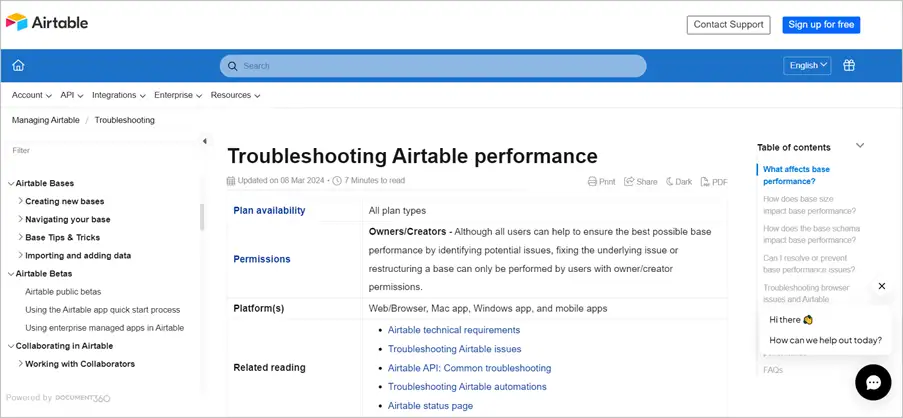
Microsoft
Microsoft provides troubleshooting guides for an enormous range of products, including Windows operating systems, Microsoft Office applications, and online services such as OneDrive and Azure.
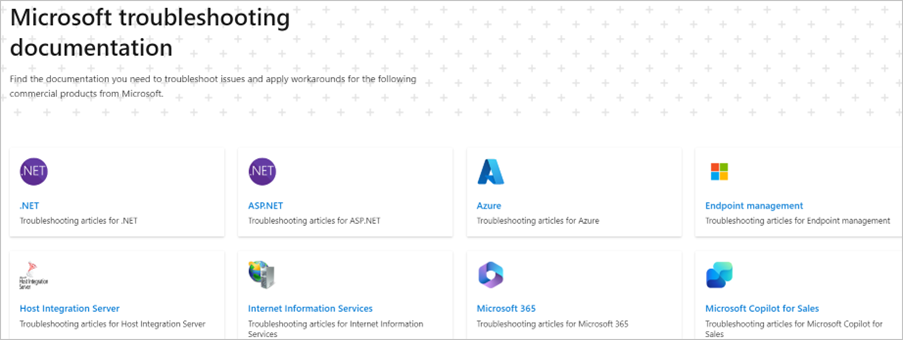
Airtable
Airtable is a project management tool with a troubleshooting guide that addresses performance issues users might encounter.

Amazon Web Services
Amazon Web Services provides detailed troubleshooting guides for its wide range of cloud computing services.
These resources address technical issues related to organizing applications, managing storage, and configuring security settings.
They include code examples, steps for analyzing logs, and best practices to assist developers and IT professionals resolve complex problems.
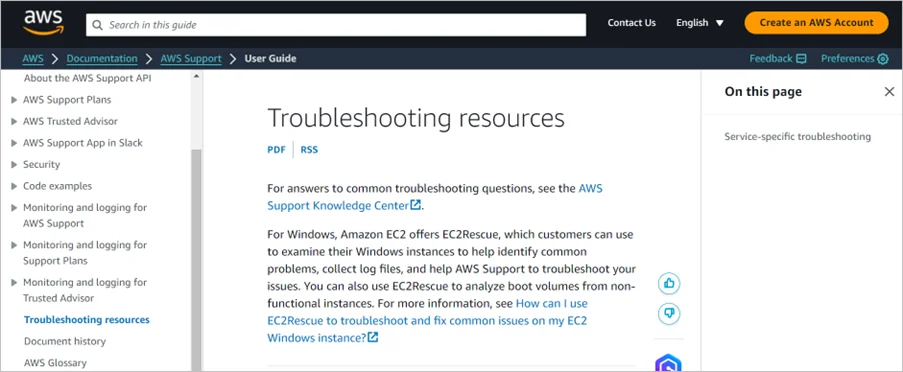
Why are troubleshooting guides important?
Having a troubleshooting guides are crucial to the business. Below are the reasons you should have one:

Resolves issues more quickly
When troubleshooting guides are available, users can maintain the product’s functionality independently, reducing the time spent contacting customer service teams.
Prevents future difficulties
By systematically identifying and analyzing the root of a problem, troubleshooting guides not only resolve the immediate issue but also provide solutions that prevent similar problems from arising in the future.
Boosts customer satisfaction
Providing troubleshooting guides allows customers to resolve issues independently, demonstrating the company’s commitment to customer satisfaction.
Generates helpful feedback
The information collected through creating troubleshooting guides and users’ feedback on them helps businesses identify areas for improvement in the product.
Creates valuable reference materials
Troubleshooting guides provide a systematic approach to quickly identifying and resolving common issues in the product.
When properly published, stored, and maintained, other users can refer to them whenever similar issues occur in the future. They can also serve as onboarding resources for support staff.
Create effective troubleshooting guides
Troubleshooting guides are powerful assets for your business, empowering your customers and internal teams to resolve issues efficiently.
With a well-maintained troubleshooting guide, you’ll be well on your way to smoother customer support operations and increased customer happiness.
Contact us to arrange a live demo and experience how BoldDesk features can improve your troubleshooting skills and help you better address customer problems. You can also sign up for a free 15-day trial.
Was this article helpful to you? Do you have any more suggestions or recommendations? Kindly leave your comments in the space below.
Related articles
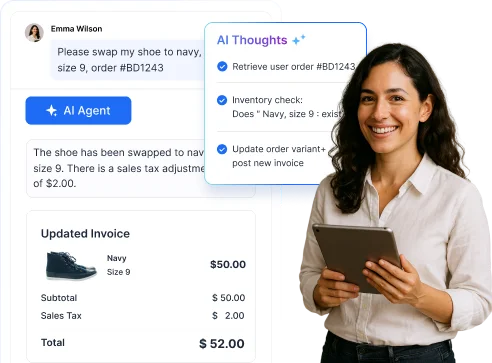


















 Email Ticketing System
Email Ticketing System Shared Inbox Software
Shared Inbox Software Multi Brand Help Desk
Multi Brand Help Desk Internal Help Desk Software
Internal Help Desk Software Trouble Ticketing Software
Trouble Ticketing Software Mobile Help Desk
Mobile Help Desk 









